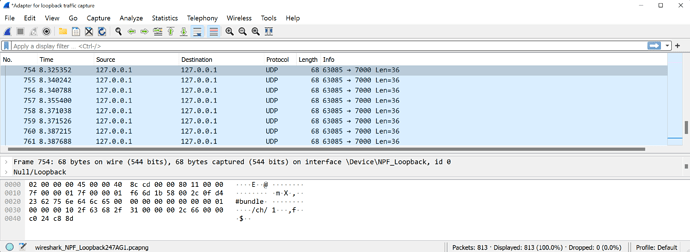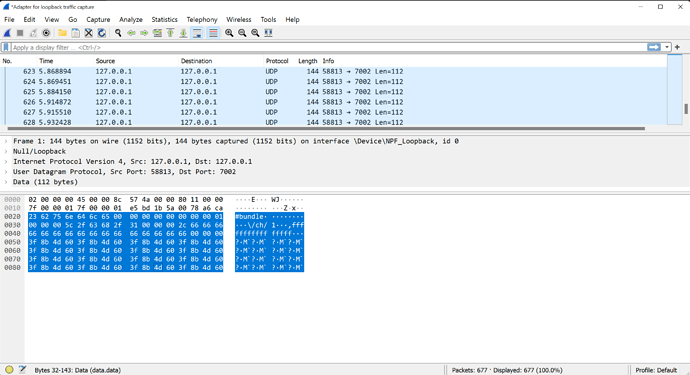There’s an ADAT DC-coupled I/O interface too.
NOTE: only outputs are DC-coupled
I’m still playing with microcontrollers and OSC - easy to find a microcontroller with DAC and ADC with plenty of resolution. solder to some opamps, and you can have DC i/o for not that much money. And all the channels you want (and the throughput of OSC on USB permits)
Plenty of opensource schematics and whatnot explaining the electronics (electrosmith daisy platform, Mutable instruments, 16n etc.).
Haven’t measured throughput or anything - but it’s something to consider (if you DIY electronics). I don’t know of any commercial offerings of OSC CV I/O.
The sample rate of trowaSoft cvOSCcv is low (100 Hz), but easy to change in the sourcecode. I tested 1000 updates/s - works fine with 16 channels of float.
8 channels of float over OSC:
It does polyphonic cables too - transfer 16 CVs on one OSC address.
1ms OSC interval (#define TROWA_OSCCV_DEFAULT_SEND_HZ 1000):
Common MCU dev boards are capable of 12 Mbit/s USB transfer. divided by 1152 bits per one 16 channel OSC message gives a max rate of 10.416 16 ch OSC messages/s. Bits are added for transfer on the USB serial. I have not measured the real maximum for OSC<->MCU.
USB - Wikipedia
GitHub - CNMAT/OSC: OSC: Arduino and Teensy implementation of OSC encoding
Serial Line Internet Protocol - Wikipedia






